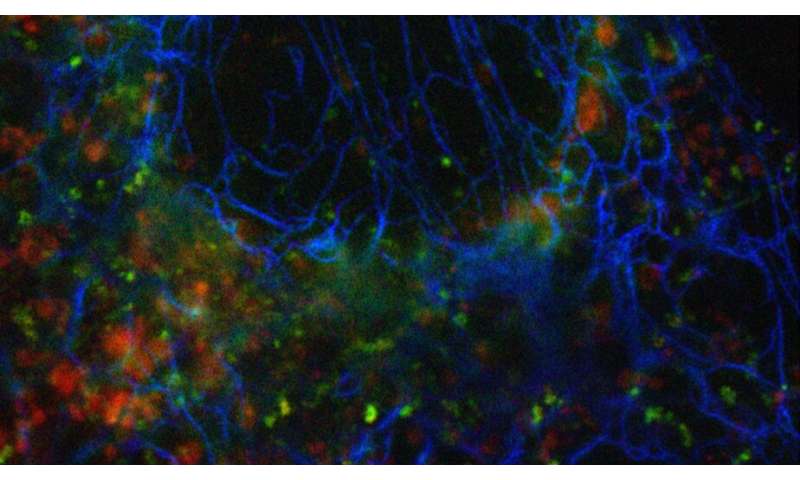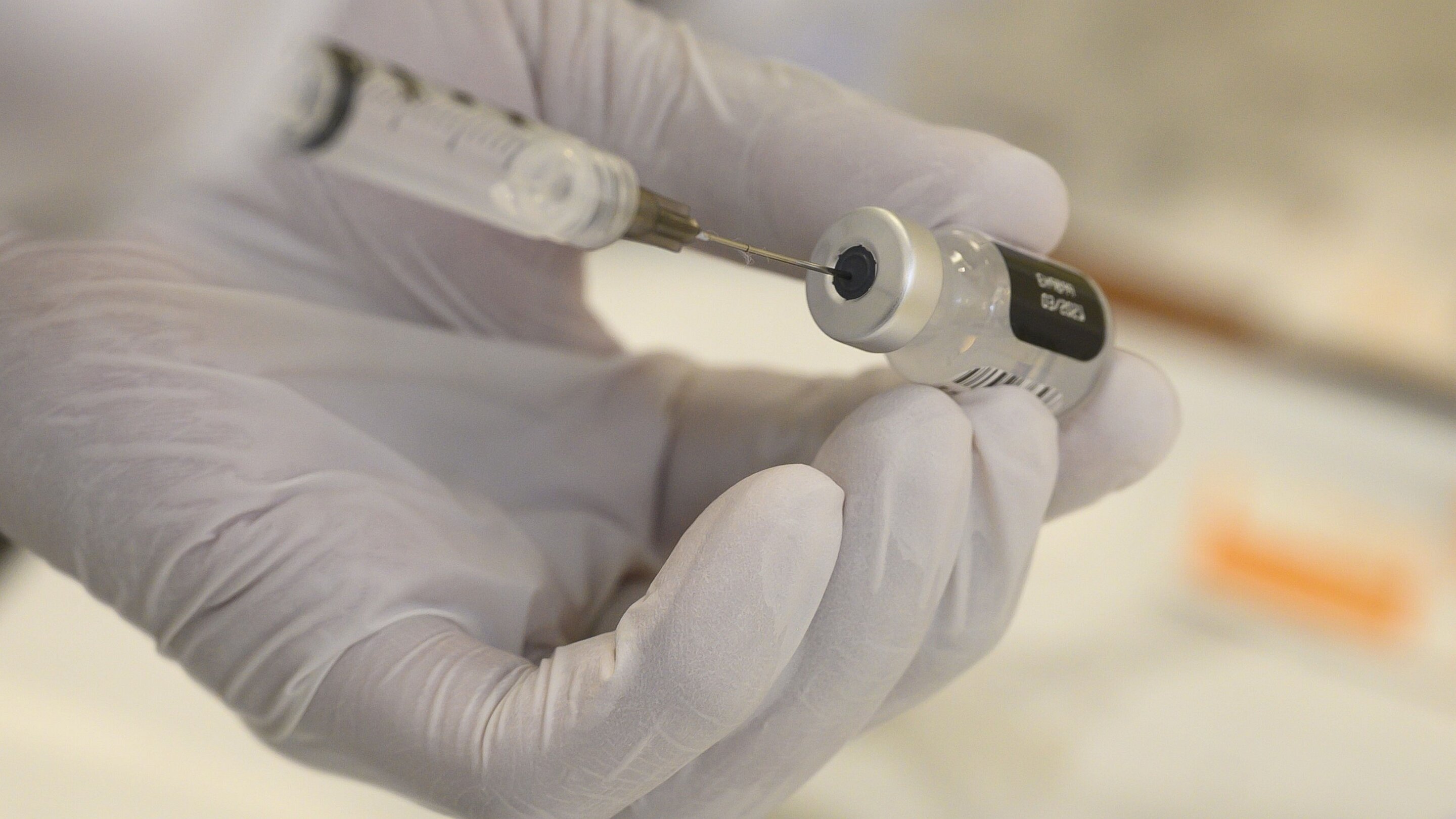#Multicolor super-resolution imaging made easy
“#Multicolor super-resolution imaging made easy”

Scientists at EPFL have developed robust and easy-to-implement multicolor super-resolution imaging. The approach is based on the simultaneous acquisition of two spectral channels followed by spectral cross-cumulant analysis and unmixing. They exploit fluorophore blinking and spectral crosstalk for the generation of additional color channels with super-resolved images.
Multicolor fluorescence microscopy is an important tool for the life sciences to study the relative arrangements of cellular structures or the interactions of different proteins. However, conventional microscopes, the workhorses for many biological studies, can only resolve details on the order of the wavelength of light. In the past two decades, several super-resolution microscopy concepts helped researchers to overcome this diffraction limit and to make new discoveries. These new methods are only slowly finding their way into routine biological applications. For some of the new techniques, this is due to complex microscope hardware, but also increased demands on sample preparation and fluorescent labels pose significant hurdles. The requirements for successful super-resolution imaging are even more challenging to meet for multicolor applications.
EPFL’s Laboratory of Biomedical Optics headed by Theo Lasser has been extensively working on Super-resolution Optical Fluctuation Imaging (SOFI) to increase the spatial resolution and sampling in 2-D and 3-D. SOFI is an alternative to Single-molecule Localization Microscopy techniques such as STORM and PALM. It analyzes higher order spatio-temporal statistics of a time-series of blinking fluorophores and does not require the isolation of individual fluorophores′ emissions. SOFI is compatible with a wider range of labeling and imaging conditions, which simplifies fluorophore selection and experiments. In their new study, researchers in the School of Engineering led by Theo Lasser and Aleksandra Radenovic (head of the Laboratory of Nanoscale Biology) extended the statistical analysis into the spectral domain to pave the way towards a new approach for multicolor super-resolution imaging.
The number of colors is not limited by the microscope’s spectral channels or Exploiting spectral crosstalk
The idea behind the multicolor SOFI approach is the following. In classical multicolor imaging crosstalk between different spectral channels of the microscope should be avoided. Here, the researchers exploit the crosstalk for generating additional color channels. They apply cross-cumulant analysis between multiple simultaneously acquired spectral channels. The statistical analysis allows them to supplement the physical detection channels provided by the microscope with additional virtual spectral channels. “Only the signals that are spatially and temporally correlated in the different spectral channels will appear in the virtual channels. We are picking up exactly the crosstalk that everyone else wants to get rid of.” explains Kristin Grußmayer, one of the lead authors of the study. The additional computationally generated spectral channels together with linear unmixing allow the imaging of more distinct fluorophore colors than recorded physical detection channels.
The publication provides the theory behind spectral cross-cumulant multicolor SOFI and includes a framework to optimize the spectral channels of the microscope for a given combination of fluorophores that should be imaged. Simulated datasets helped the team to verify that their new multicolor approach should work for a wide range of labels with different photophysical properties, even for those with strongly overlapping emission spectra. “We could show that our approach works for three color imaging in fixed and in living cells for a variety of dyes and fluorescent proteins. The imaging can be performed using commercial widefield setups with two-channel image splitting units that are widely available. In principle, we are not limited to 3 colors.” says Kristin Grußmayer.
Instructions for performing multicolor spectral cross-cumulant SOFI analysis are available on the webpage of the Laboratory of Nanoscale biology under www.epfl.ch/labs/lben/sofi-packages/ and the software package can be downloaded at www.epfl.ch/labs/lben/wp-content/uploads /2020/05/multicolor_sofi_v2.3.zip .
More information:
K. S. Grußmayer et al. Spectral cross-cumulants for multicolor super-resolved SOFI imaging, Nature Communications (2020). DOI: 10.1038/s41467-020-16841-1
Multicolor super-resolution imaging made easy (2020, June 16)
retrieved 16 June 2020
from https://phys.org/news/2020-06-multicolor-super-resolution-imaging-easy.html
This document is subject to copyright. Apart from any fair dealing for the purpose of private study or research, no
part may be reproduced without the written permission. The content is provided for information purposes only.
If you want to read more Like this articles, you can visit our Science category.
if you want to watch Movies or Tv Shows go to Dizi.BuradaBiliyorum.Com for forums sites go to Forum.BuradaBiliyorum.Com




